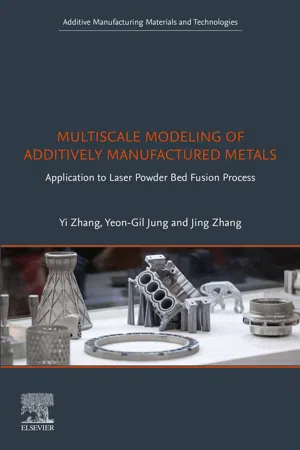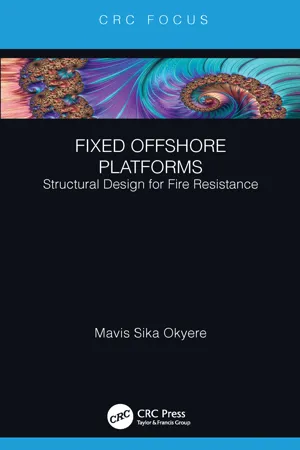Cyclic Loading
Cyclic loading refers to the repeated application of stress or strain on a material over time, leading to potential fatigue and failure. This phenomenon is commonly observed in engineering and materials science, where structures and components are subjected to fluctuating loads. Understanding the effects of cyclic loading is crucial for designing durable and reliable products, as it can help prevent unexpected failures.
6 Key excerpts on "Cyclic Loading"
- eBook - ePub
Materials
Engineering, Science, Processing and Design
- Michael F. Ashby, Hugh Shercliff, David Cebon(Authors)
- 2009(Publication Date)
- Butterworth-Heinemann(Publisher)
...This chapter is about the energy that is dissipated, and the damage and failure that can result, when materials are loaded in a cyclic, repetitive way. Even when the amplitude of the cycles is very small, some energy dissipation or damping occurs. Larger amplitudes cause the slow accumulation of damage, a little on each cycle, until a critical level is reached at which a crack forms. Continued cycling causes the crack to grow until the component suddenly fails. Fatigue failure is insidious—there is little sign that anything is happening until, bang, it does. So when the clip breaks off your pen or your office chair collapses, it is probably fatigue that is responsible (cover picture). We start with Cyclic Loading at very small amplitudes and the energy loss or damping that goes with it. We then turn to the accumulation of damage and cracking that is associated with fatigue loading proper. 9.2 Vibration and resonance: the damping coefficient Bells, traditionally, are made of bronze. They can be (and sometimes are) made of glass, and they could (if you could afford it) be made of silicon carbide. Metals, glasses and ceramics all, under the right circumstances, have low material damping or ‘internal friction’, an important material property when structures vibrate. By contrast, leather, wood (particularly when green or wet) and most foams, elastomers and polymers have high damping, useful when you want to kill vibration. We are speaking here of elastic response. Until now we have thought of the elastic part of the stress–strain curve as linear and completely reversible so that the elastic energy stored on loading is completely recovered when the load is removed. No material is so perfect—some energy is always lost in a load–unload cycle...
- eBook - ePub
Solutions for Biot's Poroelastic Theory in Key Engineering Fields
Theory and Applications
- Yuanqiang Cai, Honglei Sun(Authors)
- 2017(Publication Date)
- Elsevier(Publisher)
...Introduction ☆ All structures made by human beings have to be placed on or in the soil. At the very beginning, these soil foundations are only subjected to static loads, which are loads that build up gradually over time or with negligible dynamic effects, also known as monotonic loads. In the 1930s, due to the rapid development of machine manufacturing and transportation industries, the dynamic interaction between structural foundations and the underlying soil behavior under the action of cyclic loads started to receive considerable attention in a number of engineering fields. Cyclic loads are loads which exhibit a degree of regularity both in their magnitude and frequency. Stress reversals, rate effects and dynamic effects are the important factors that distinguish cyclic loads from static loads. Practically speaking, no real cyclic loads exist in nature; however, many kinds of loads can be simplified into cyclic loads for the convenience of study, analysis and design. For example, the operation of a reciprocating or a rotary machine typically produces a cyclic load. The passing of a long train can be considered a cyclic load. Even cars running on a road on the same line can be simplified as a cyclic load. Cyclic loads acting on the structures and soil can produce elastic waves in the ground which will act on the surrounding foundations and soil. These actions can cause environmental and safety problems. As a result, it is very important to take a deep look into this area to advance the knowledge regarding the theory of vibrations, the principles of wave propagation, and numerical methods in finding appropriate solutions for problems of practical interest. In the past few decades, many studies have been carried out on soil-structure interactions under cyclic loads. Most of them have treated the soil as an elastic or viscoelastic medium. However, there is underground water in what is considered soil medium, such that the soil is actually a two-phase medium...
- eBook - ePub
Multiscale Modeling of Additively Manufactured Metals
Application to Laser Powder Bed Fusion Process
- Yi Zhang, Yeon-Gil Jung, Jing Zhang(Authors)
- 2020(Publication Date)
- Elsevier(Publisher)
...These charts provide the life of a component against a given stress value. For low cycle fatigue, a similar strain-life curve is used to assess the life of the material more popularly. The strain measure is accurate for low cycle fatigue regimes. Another way is to refer to the Coffin-Manson laws to predict the life for both high cycle fatigue and low cycle fatigue. These too would require static analysis results and assume that the rate of crack propagation is linear. Also, we intend to capture the effect of damage through cycles. To achieve this would be computationally prohibitive. Fatigue analysis involves repeated cycles of static loading and to run those many static cycles is inefficient. Even to predict the stable hysteresis loop for a material subjected to reversed plastic strain cycles would require considerable computation time. Direct methods for finding stabilized material response were explored for the very same reason. The methodology incorporated in commercial finite element tools is based on the seminal works of Dang Van and Maitournam [20] who leveraged the cyclic behavior to find Fourier series expansion. The overall methodology is shown in Fig. 11. Fig. 11 Methodology incorporated by Dang Van and Maitournam [20]. The stable cycles, which are predicted by the hardening laws, are reached by enforcing the deformation and force ranges to acquire cyclic values consistent with values at the stabilized cycle. This method predicts the asymptotic material response directly without actually calculating through all cycles. The method works on a large time incrementation method and seeks the mechanical fields that have the same values at the end of a loading cycle as those at the beginning of the cycle. This method can predict elastic and plastic shakedown as well as ratcheting [20]. 3.2 Implementation in a finite element model We can incorporate a direct cyclic algorithm using user-defined subroutines...
- eBook - ePub
Additive and Traditionally Manufactured Components
A Comparative Analysis of Mechanical Properties
- Joshua Pelleg(Author)
- 2020(Publication Date)
- Elsevier(Publisher)
...Chapter Eight Cyclic deformation (fatigue) in AM and traditional manufacturing: A comparison Abstract About 80% of all failures in service are associated with fatigue. It occurs when a component is exposed to repeated loading cyclically under the action of the fluctuating stress. Fatigue failure might occur without any warning always in a brittle fracture mode. Ferrous material and Ti alloys are characterized by an endurance limit in an S-N plot, while other alloys are tested and the test terminated at ~ 10 8 cycles without failure. S is the stress and N is the number of cycles. High cycle and low cycle fatigue in AM and traditionally fabricated Ti-6Al-4V, Al AA6061, and SS 304L are discussed accompanied with microstructural fatigue fracture illustrations and the appropriate functional relations. Rough surface and notch effect are extensively discussed and their influence on fatigue properties and fatigue lifetime are considered. Hysteresis phenomena and appropriate relations are widely discussed and the Massing hypothesis on stabilizing hysteresis loops is also evaluated. The number of cycles to failure is shown. Keywords Fatigue; High cycle fatigue; Low cycle fatigue; Rough surface; Notch effect; AM; Conventionally fabricated; Ti-6Al-4V; Al AA6061; SS 304L 8.1 Introduction to fatigue It is believed that generally about 80% of all failures in service are associated with fatigue. Fatigue failure is initiated by the development of a crack, which then grows and propagates until fracture sets in. Generally, fatigue may occur when a component is exposed to repeated loading cyclically or when it is subjected to the action of a fluctuating stress. The danger in fatigue failure is that it might occur without any warning catastrophically at stress levels below the static yield stress. The failure is always a brittle fracture regardless of whether the material is brittle or ductile...
- Mavis Sika Okyere(Author)
- 2018(Publication Date)
- CRC Press(Publisher)
...8 Fatigue Analysis Fatigue is the weakening of a material caused by the repeated application and removal of stress. For example, if you bend a piece of metal back and forth repeatedly in the same spot, fatigue will result at the bend location and will weaken the metal until it eventually breaks. Technically, platforms experience fatigue as a result of periodic increases (application of stress) and decreases (removal of stress) in operating pressures. Because fatigue can cause a failure to occur at stress levels well below those that a material can withstand in a single, nonrepetitive loading, materials that must resist repeated stress cycles must be specially designed for this service. Durability is the ability of the material to resist fatigue. Fatigue analysis is done to ascertain the offshore platform structural response to continual wave loading. Fatigue analysis is carried out using the deterministic method or spectral method. Use the S – N curves to determine fatigue cycles. Also calculate the fatigue stress or fatigue damage. A detailed fatigue analysis should be performed for all structures as recommended in Section 5.2 of API RP 2A. The fatigue analysis is performed with input from a wave scatter diagram and from the natural dynamic response of the platform and the stiffness of the pile caps at the mud line by applying the Palmgren-Miner formula. Miner’s rule is probably the simplest cumulative damage model. It states that if there are k different stress levels and the average number of cycles to failure at the i th stress, S i, is N i, then the damage fraction, C, is C = ∑ i = 1 k n i N i (8.1) where n i = the number of cycles accumulated at stress S i C = is the fraction of life consumed by exposure to the cycles at the different stress levels...
- eBook - ePub
Fatigue Testing and Analysis
Theory and Practice
- Yung-Li Lee, Jwo Pan, Richard Hathaway, Mark Barkey(Authors)
- 2011(Publication Date)
- Butterworth-Heinemann(Publisher)
...The true fracture ductility ε f is the true strain at final fracture and is calculated as follows: (5.3.13) 5.3.2. CYCLIC MATERIAL PROPERTIES 5.3.2.1 Transient Cyclic Response The transient cyclic response of a material describes the process of change in the resistance of a material to deformation due to Cyclic Loading. If a material is repeatedly cycled under fully reversed strain-controlled loading, the material may respond in one of the following ways: cyclic hardening, cyclic softening, remaining stable, or some combination of these responses. Figures 5.8 and 5.9 demonstrate transient cyclic hardening and transient cyclic softening, respectively, under strain-controlled loading. In transient cyclic hardening, the stress developed in each successive strain reversal increases as the number of cycles increases. In transient cyclic softening, the stress decreases as the number of cycles increases. In both cases, the rate of change of the applied stress will gradually reduce and the stress magnitude will reach a stable level (a steady-state condition) and remain stable for the rest of the fatigue life until the detection of the first fatigue crack. The transient cyclic behavior is handled by using the cyclically stable behavior in the local strain–life approach since the percentage of the number of cycles spent on this transient response is relatively small compared to the total fatigue life. FIGURE 5.8 Transient behavior—cyclic hardening. FIGURE 5.9 Transient behavior—cyclic softening. The transient phenomenon is believed to be associated with stability of the dislocation substructure within the metal crystal lattice of a material...





